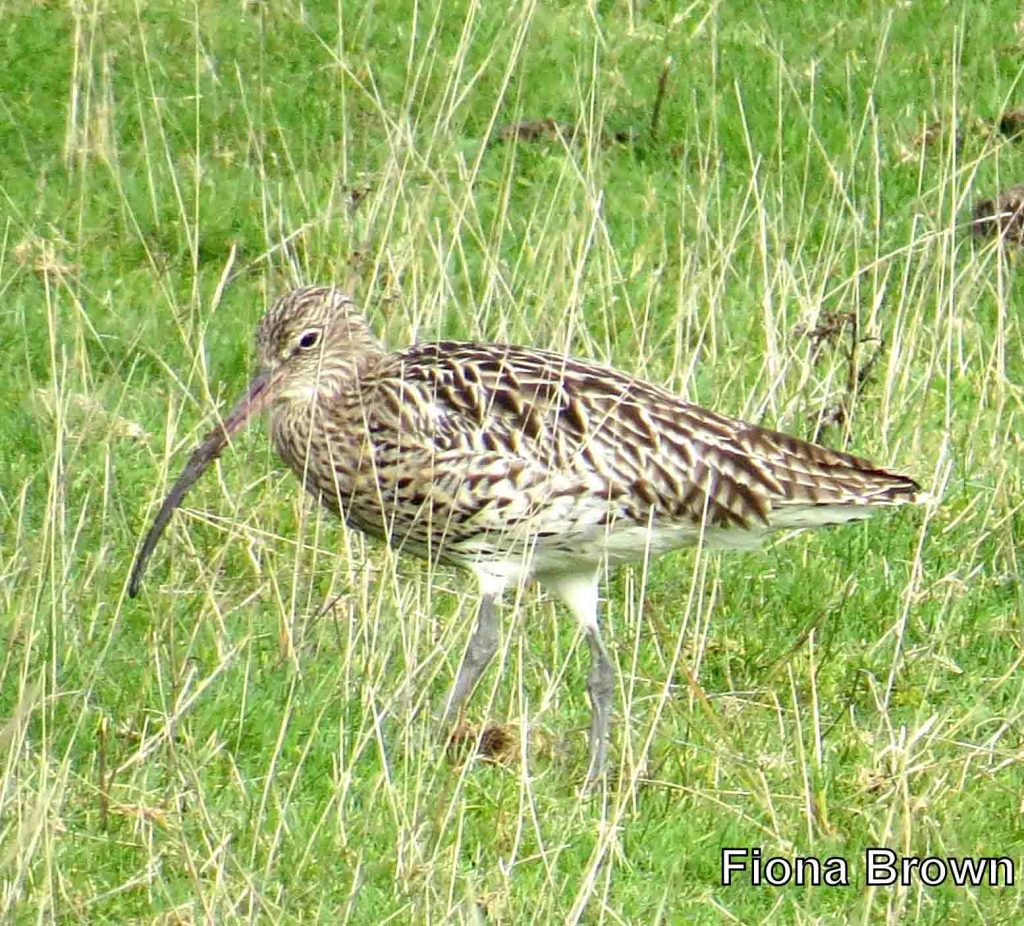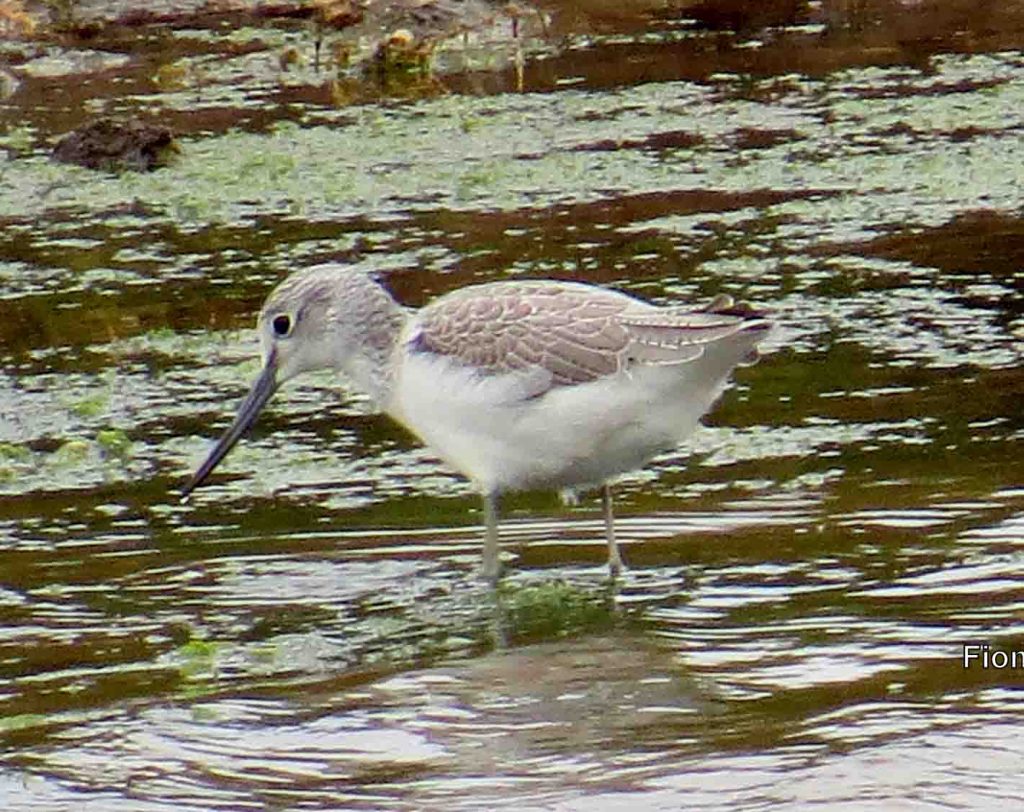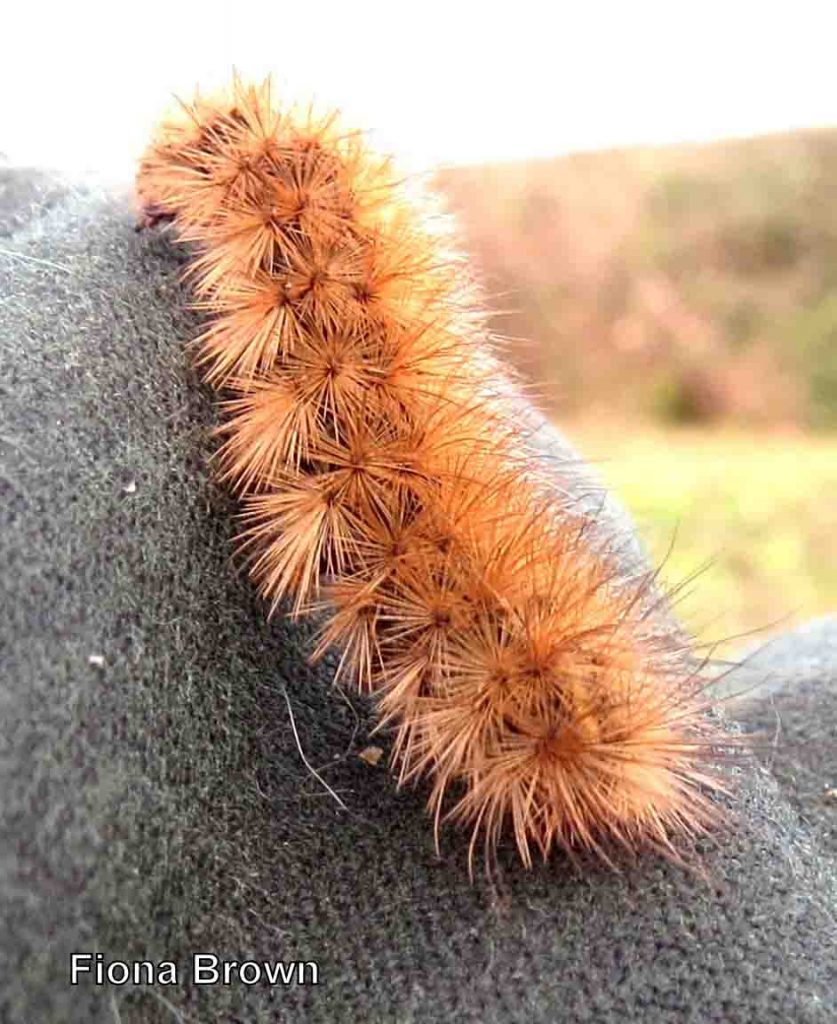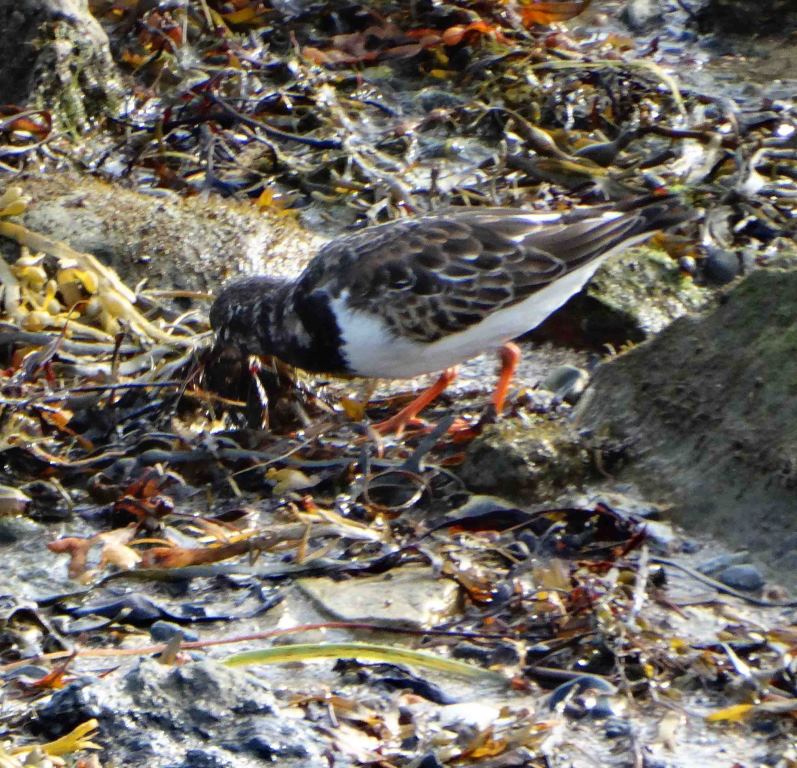On Sunday 20 October, 16 members gathered mid-morning on roadside parking adjacent to the Normandy Marshes near Lymington for a field trip organised by Ken and Sarah White. The incoming tide had yet to cover all of the mud and seaweed, and it was here on 4-Acre Pond that we were treated to the first suite of waders: lots of Redshank were mixed with varying numbers of Dunlin, Ringed and Grey Plover, Oystercatcher, Curlew and Lapwing. Gulls were mostly Black-headed, but a few Herring and Great Black-backed gave the full size range. Early on some members found Little Grebe and Kingfisher; repeated views of the latter meant everyone eventually saw at least one. As we headed north-eastwards along the “Solent Way” pathway, the inland brackish lagoons provided a huge array of wildfowl, many of which were Wigeon; most of the males were still wearing their rich rusty “eclipse” plumages. It was a delight to see several families of recently-arrived Russian Dark-bellied Brent Geese Branta bernicla bernicla. The many juveniles present indicated a successful breeding season for them up on the high Siberian arctic tundra. As we watched them, more and more families came in to join them off the Solent, eventually totalling 75 birds. A few Little Egrets and Greenshank added extra interest to the large flock of Lapwing, but without doubt the highlight of the morning was a Merlin dashing around over Normandy Farm chasing a flock of Starling, not once but twice within minutes. A group of Turnstone provided very confiding views turning over stranded heaps of seaweed along the bank, and groups of Swallows were found feeding over reedbeds and adjacent woodland.
Lunch was enjoyed at the nearby Chequers Inn, and it was from here that the afternoon walk was started by heading off to the southwest across the grazing meadows of Pennington Marsh. The flooded fields yielded quite a different mix of birds, starting with the one and only Golden Plover. Resident Canada Geese were widespread, and in amongst these fresh water lagoons were Coot, Shoveler, surprising numbers of Pintail, Teal, Mallard and Gadwall. One very observant member found a caterpillar of the Ruby Tiger moth Phragmatobia fuliginosa. Meadow Pipits and Linnets seemed to be flitting about everywhere, no doubt of interest to a female Sparrowhawk whizzing to and fro over the gorse bushes. Even Stonechats were in good numbers along the pathway, and a single Wheatear here delighted everyone with its presence. Seventy Turnstones were roosting on the concrete jetty-pipeline, but the final surprise was a group of Spotted Redshanks in full winter dress, roosting at high tide in the company of other shore birds.
Forty seven species was the final tally for the day, and for many it was a fine day for seeing and welcoming the incoming birds of winter and a final farewell to the last of the outgoing summer migrants. Some members stayed on for a hearty roast and a chance to review a splendid day’s birding. Many thanks to Fiona Brown for catching some of the highlights of the day with her photos.
Report by Ken White
Pictures by Fiona Brown and Laurie Haseler





